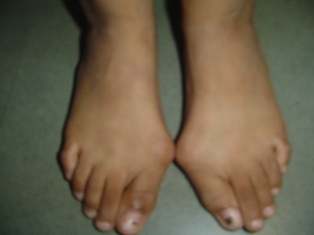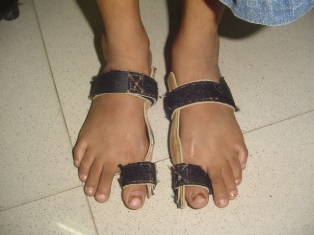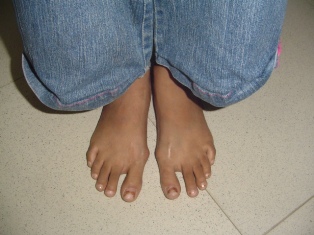Understanding Hallux Valgus: Causes, Symptoms, and
Treatment
Welcome to our website, where we aim to provide valuable insights into various orthopedic conditions. In this article, we will delve into the topic of Hallux Valgus, a common foot deformity that can affect individuals of all ages. Our expert, Dr. Sameer Desai, a renowned pediatric orthoped icorthopedic surgeon in Pune, will guide us through the intricacies of this condition.
What is Hallux Valgus?
Hallux Valgus, commonly known as a bunion, is a foot deformity that primarily affects the big toe. It occurs when the big toe gradually deviates away from the midline of the foot, towards the smaller toes. This misalignment causes a bony prominence to develop on the inner edge of the foot at the base of the big toe joint. As the condition progresses, the joint itself may become swollen, painful, and restricted in its movement
Causes:
Hallux Valgus, commonly known as a bunion, is a deformity where the big toe deviates outward, causing a bony bump on the side of the foot. The main causes include:
Genetics: Family history plays a significant role, as bunions tend to run in
families.
Flatfeet & Foot Structure Issues: Certain foot types, such as flat feet or those with excessive
pronation, can increase the risk.
Improper Footwear: High heels and narrow-toed shoes can push the toes
together and worsen the deformity.
Arthritis: In some cases, arthritis affecting the big toe joint can contribute to the development of a bunion.
Early diagnosis and proper treatment can prevent progression and foot pain. If you need Hallux Valgus treatment, consult Dr. Sameer Desai, a leading Pediatric Orthopedic Surgeon in Pune, for expert care!
Symptoms:
Hallux Valgus can cause various symptoms, including:
Pain: Pain at the base of the big toe, often aggravated by pressure or movement.
Swelling: The affected area may become swollen, red, and tender.
Deformity: A visible bump on the inner edge of the foot, near the big toe joint.
Restricted Movement: The range of motion in the big toe joint may be limited.
Corns and Calluses: Due to the pressure from footwear, corns and calluses may develop over the bony prominence.
Treatment Options:
Dr. Sameer Desai, a respected pediatric orthopedic surgeon in Pune, specializes in the diagnosis and treatment of Hallux Valgus. Depending on the severity of the condition, treatment options may include:
Conservative Measures: These include wearing wide-toed, supportive shoes and using custom orthotics to help realign the foot.
Pain Management: Non-prescription pain relievers, ice packs, and anti-
inflammatory medications can help manage pain and swelling.
Physical Therapy: Specific exercises can improve joint mobility and strengthen the muscles around the affected area.
Dr. Sameer Desai, with his expertise in pediatric orthopedics, provides tailored treatment plans for children and adults, ensuring the best possible outcomes and improved quality of life.
If you or your loved ones are experiencing symptoms of Hallux Valgus, don hesitate to reach out to Dr. Sameer Desai's clinic. With his comprehensive knowledge and compassionate care, you can take confident steps towards healthier and pain-free feet.



